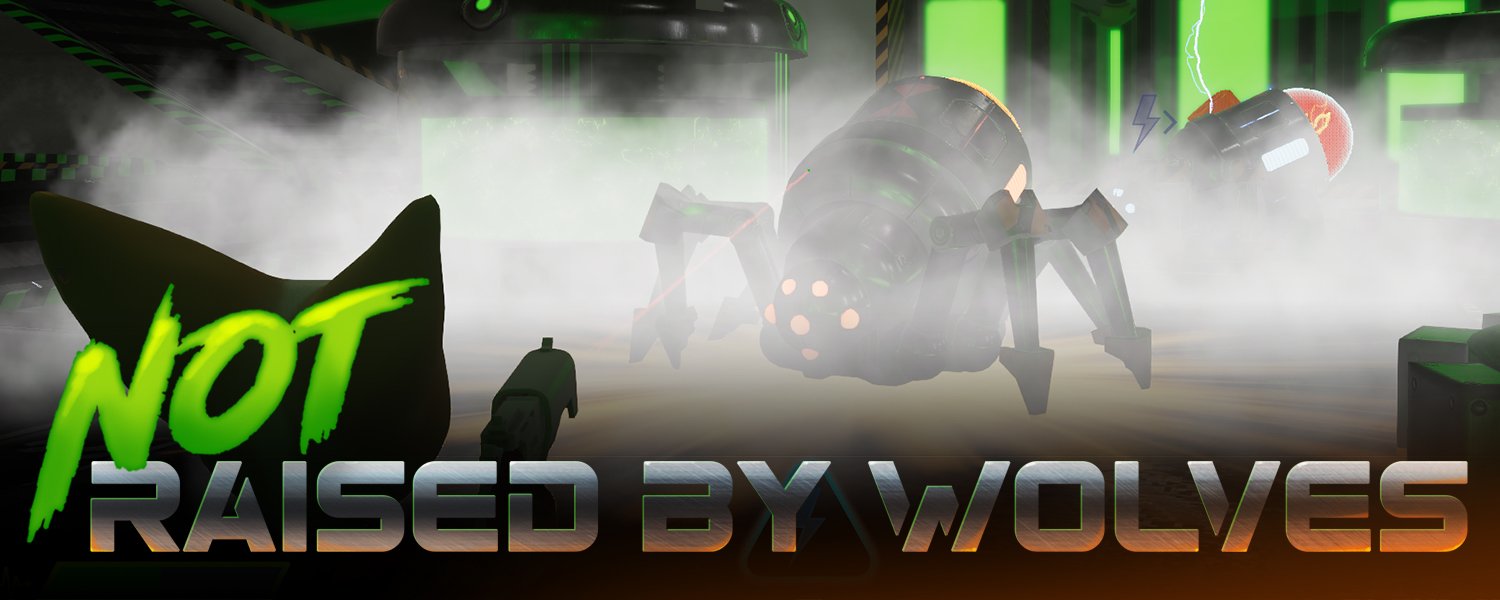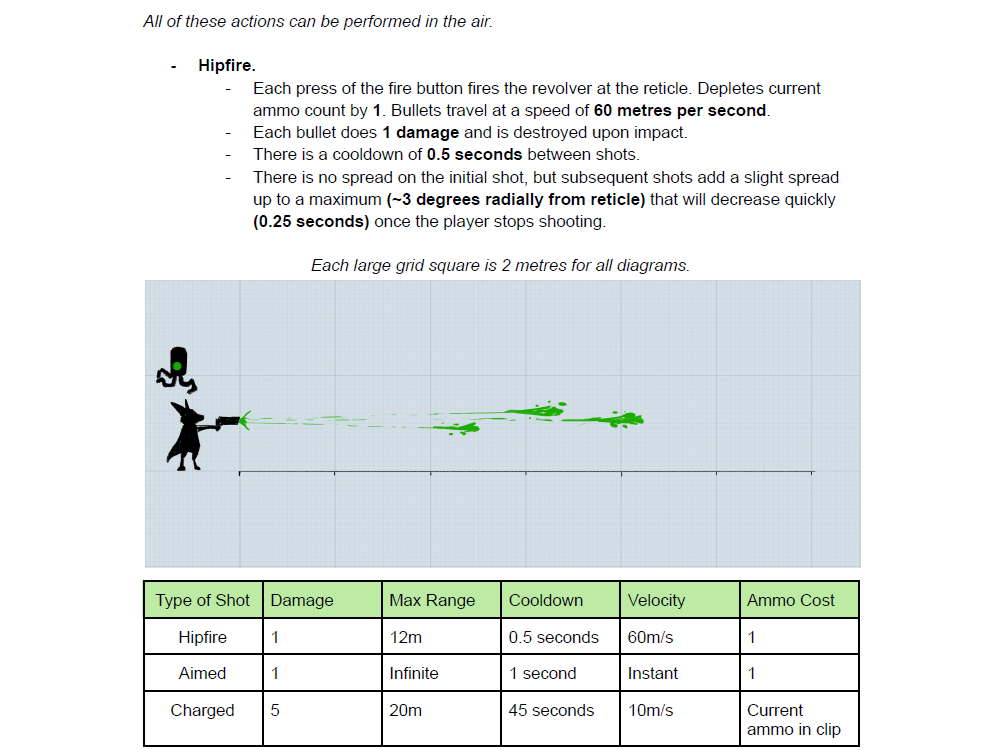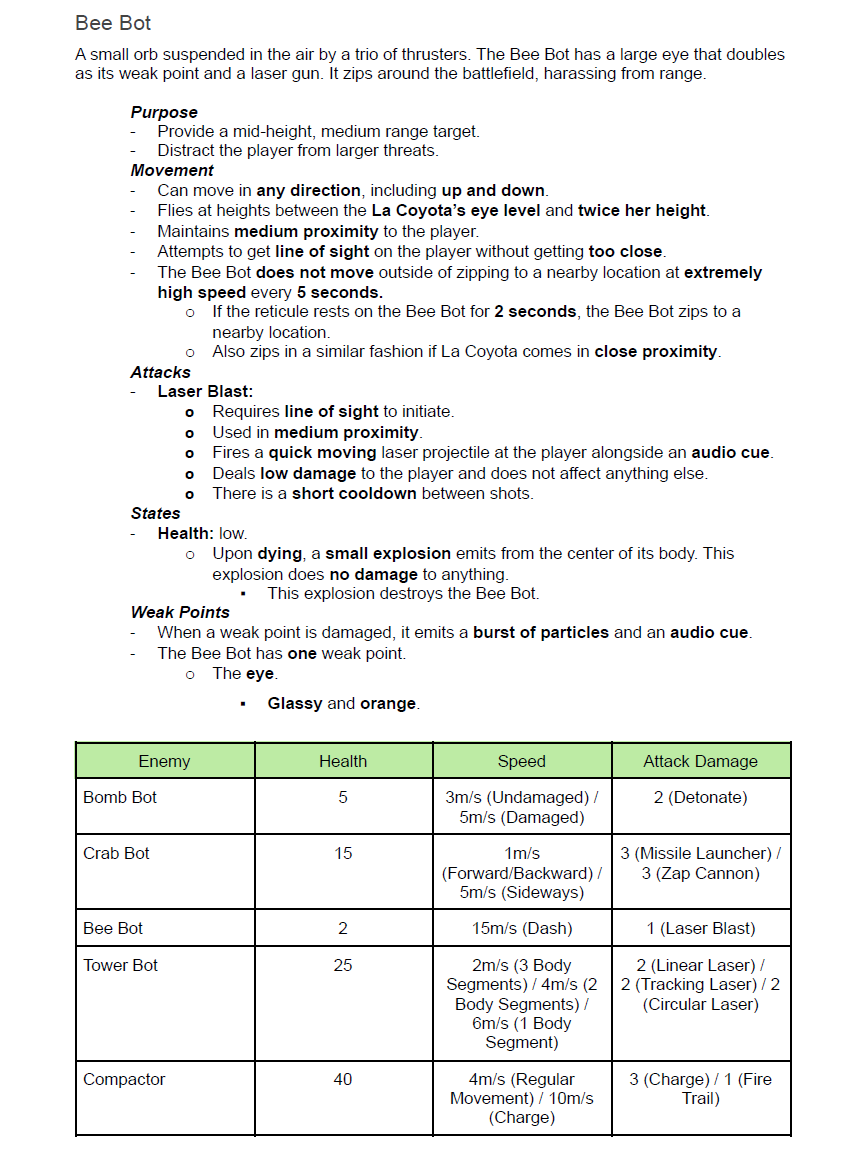
-Nominated for Unity’s 2021 Student Project- -of the Year Award-
Woo!
Not Raised by Wolves - Gameplay Trailer
Not Raised by Wolves
Not Raised by Wolves is a third-person shooter made in Unity featuring La Coyota, an anthropomorphic gunslinger delving into an ancient AI facility to rescue her colony’s stolen pups.
Not Raised by Wolves was my team’s final project for Vancouver Film School’s Game Design program. It was developed over 5 months in Unity using the HDRP pipeline.
I was the level and narrative designer on this project, but also the project manager. I designed 2D layouts, prototype shells, and encounters for all areas of the game. Further, I implemented lighting and set dressing across the entire level as well.
Additionally, I wrote, voiced, and implemented most of the cinematic sequences in the game. And finally, I produced much of the game’s documentation, including most of the GDD and asset tracking documents.
Although not related to the game’s development directly, I also recorded and edited the trailer seen above.
If you’d like to play NRBW, you can find it here.
Gameplay from the final encounter in Not Raised by Wolves.
Below you can find some examples of the work I did for this project:
Design Documentation
The first step was a collaborative effort by my team to design the Game Design Document (GDD). I was largely focused on the level design aspect, but I also wrote the sections on enemy and player mechanics and the narrative.
The initial designs described in this document were loosely made as a group. We were fortunate enough to have a concept artist who made a few versions of enemies, which I then tightened and added definable metrics to. At first, we aimed to have a host of weapons and less enemies, but decided to move the complexity onto the enemies to facilitate a greater range of arena experiences.
Of course, because I love storytelling in games, I also took some time to write a short excerpt on the greater world not necessarily seen in the game itself. This proved extremely useful as it informed the function and design of each character in the game.
The great part about the GDD here is that we maintained the same pillars from conception to the final build of NRBW. By taking the strong conventions of the TPS genre as our base, we were able to implement more content and polish it to a higher degree than we would have been able to otherwise. In fact, most of the enemy and player design matched the outline given in the GDD.
On the right are a couple excerpts of my design for one of the player’s firing modes and an enemy’s design.
If you’d like to check out NRBW’s GDD, you can find it here.
Find the hi-res version of Disposal’s 2D layout here.
Initial Level Design
I designed 2D layouts for every area of the game in Adobe Photoshop before production began. This example is for the beginning area, Disposal, which included a rudimentary tutorial, encounters, and beats. This provided the basis for iteration for NRBW’s level design.
Disposal was designed to allow the player to learn the controls and mechanics in a non-threatening environment before encountering enemies. The tutorial featured non-lethal challenges, such as needing to dash over a gap with a fan that would push you back if you simply tried to jump over it.
After the tutorial, the first enemies were introduced in a fairly open arena with minimal elevation. This was to allow the player to understand the Spider and Bomb Bots’ behaviours by observation. The next arena increased the challenge with large line-of-sight blockers that would allow the Bomb Bots to surprise the player. In addition, two Spider Bots that fired arcing missiles were prominently placed atop garbage piles in order to not obfuscate the source of the threat.
From here, Disposal and the rest of the game was iterated on in Unity’s editor.
Encounters: Prototype to Final
After the 2D layouts were ratified, I then blocked out all the areas using ProBuilder and ProGrids. Gameplay was tested and iterated on in this arenas before being replaced with finalized props and shells by the environment artist.
This arena, Containment, is the first time the player encounters the Tower Bot enemy. A series of radioactive waste containers slightly higher than the player were placed to give cover from this terrifying new enemy. Originally, a pair of extending platforms were added to allow the player to get on the same level as the Bee Bots, but it detracted from the experience of the high-flying and looming enemies in the room.
In the end, two waves were implemented: the first, pictured on the right, and the second wherein the Tower Bot would rise from an elevator with its own intro. This helped take the pressure off the player and created a great moment of surprise when the arena continues instead of ending.
Set Dressing and Lighting
The shell props were placed during initial blockouts, but most set dressing occurred after the first shell meshes were made. Once the first set dressing pass was made, I did a pass with lighting using HDRP. From there, it was a dialogue between myself and the environment artist to keep the lighting and post-processing looking good while falling within technical limitations.
The sublevel on the left is Conveyor, which connected the first and second arenas. The set dressing was done to communicate the idea of a maintenance transport area, not meant for the comfort of humans. It depicts broken robots and actually hints at the future introduction of the Tower Bot. Through the righthand windows, I designed and implemented a cinematic narrated by the game’s drone companion that depicts the driving objective of the game: rescuing the colony’s pups. This cinematic featured mixed spot lights highlighting the crate the pups were trapped in as it moved along a conveyor.
The pacing of having the cinematic after the first arena broke up the low-intensity moments, rather than having a cinematic play during or right after the tutorial.
Cinematics and Narrative
The last primary responsibility I held was the creation of the various cutscenes and narration throughout the game. The AI drone companion is controlled by a remote operator (Harvey) whom I both wrote and voiced. It was also up to me to decide what dialogue would play where and at what frequency. Harvey was imagined as a guide for the player during the tutorial that transitioned into more flavour commentary as the game progressed. Getting his voice into the game made the whole thing come alive.
The cinematics and cutscenes were implemented using Unity’s timeline tool and Cinemachine. Our systems programmer created some custom tracks to control the transform and certain sound clips in order to make things work. It was my job to take his tools and create narratively engaging cinematics with them.
On the right you’ll see two cutscenes: one for the first time the player sees the kidnapped pups (as mentioned in Set Dressing and Lighting) and the final boss fight teaser that ends the game. We didn’t have the resources for a proper boss fight, but we still wanted to have an anticipatory send-off at the end of our game.
If you’re interested in seeing how the dialogue was tracked, you can find the dialogue tracking sheet here.
Cutscene presented in Conveyor that introduces the stolen pups.
Cutscene that plays at the end of the final arena.









